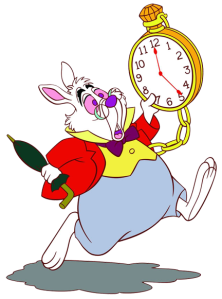“Wait time is the period of silence between the time a question is asked and the time when one or more students respond to that question.” (TeacherVision, 2015)
It is necessary to give students some time to think about the questions and formulate a response. Even though it can feel like you have been waiting forever for an answer, or even just some small sign that they heard you, in reality it was probably less than one second. On average, teachers only wait 0.7 and 1.4 seconds after asking a question (Stahl, 1994). Try counting to at least three in your mind (one mis-sis-sip-pi, two mis-sis-sip-pi, etc) before repeating the question or rewording it. Nobody wants to turn into the economics teacher in Ferris Bueller’s Day Off.
Most students will take anywhere from 1 to 10 seconds to process a question and find link the correct information to it. As such it is also a good idea to wait after getting a response to let the other students process the answer as well.
So how long should you wait?
This depends on the complexity of the question, the ability of the students and the clarity with which the question was asked. In general, recall and lower-level questions will take most students 1-3 seconds to answer. Questions that require calculation, such as 11 x 3, usually take 4-6 seconds to generate a response. Higher-order questions that require more thought than the simple recall questions, could take anywhere from 6 to 10 seconds to formulate a reply.
Benefits to waiting longer
In 1972, Mary Budd Rowe published a paper summarising five years of study into wait times. She observed that when teachers allowed at least 3 seconds of wait time, there were a number of positive changes in the classroom.
“There are increases in the length of the response, the number of unsolicited appropriate responses, student confidence, incidence of speculative responses, incidence of child-child data comparisons, incidence of evidence-inference statements, frequency of student questions, and incidence of responses from “relatively slow” students. The number of teacher questions which do not elicit a response decreases.” (Rowe, 1972)
By waiting longer for a response, a teacher will involve more class members, get better quality answers and students are more likely to ask their own questions.
REFERENCES
Rowe, M B 1972, “Wait-Time and Rewards as Instructional Variables: Their Influence on Language, Logic, and Fate Control” in Resources in Education, Education Resources Information Center, Presented at the National Association for Research in Science Teaching, Chicago, Illinois, April 1972, viewed on 17 April 2015, http://eric.ed.gov/?id=ED061103
Simonds, C J and Cooper, P J 2014, Communication for the Classroom Teacher, 9th edn, Allyn & Bacon of Pearson Education Ltd, Glenview, USA
Stahl, R J 1994, ‘Using “Think-Time” and “Wait-Time” Skillfully in the Classroom. ERIC Digest.’ Viewed on 15 April 2015, http://files.eric.ed.gov/fulltext/ED370885.pdf
TeacherVision 2015, Your Secret Weapon: Wait Time, Teaching Methods and Strategies, TeacherVision, viewed on 15 April 2015, https://www.teachervision.com/teaching-methods/new-teacher/48446.html
Tsiorvas, A 2015, EDMT903 Communication for Teachers, Lecture 2, Week 3: Questioning, Listening and Feedback, lecture Powerpoint Slides, viewed on 20 March 2015, https://moodle.uowplatform.edu.au/
Video: Ferris Bueller’s Day off: https://www.youtube.com/watch?v=uhiCFdWeQfA&feature=youtu.be
Video: Positively MAD Teaching Tip #7:Questioning Skills: Wait Time: https://www.youtube.com/watch?v=mfUSNBTQxaM
Image: Alice in Wonderland, The White Rabbit: https://katespencer17.files.wordpress.com/2015/01/white-rabbit-watch.png
Image: Girl Thinking: http://www.internationalstudentinsurance.com/blog/wp-content/uploads/2013/06/thinking167230135.jpg

